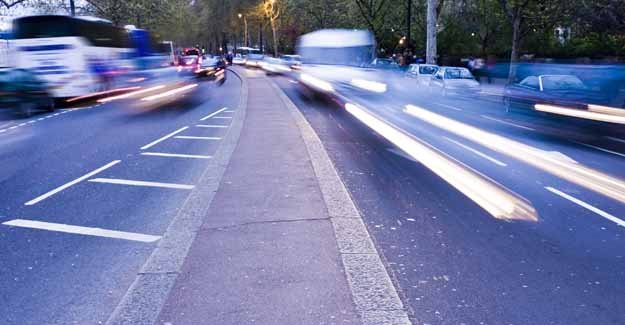All road users can support this year’s National Anti-Bullying week (17 – 21 November) by brushing up on their knowledge of the rules of the road. The RAC Foundation is encouraging motorists in particular to refresh their knowledge of the Highway Code – something they may not have done since they learned to drive.
Bullying by drivers is often called ‘road rage’, but whatever term is used, the causes and the outcomes are easy to recognise. Being over-confident about driving skills and the rules of the road lead to a series of actions and reactions that can end in disaster.
A typical situation can be spotted on motorways when temperamental-tailgater meets middle-lane hog, with no respect for other drivers or the shared space.
Similar situations can occur elsewhere when drivers and other road users become unsure of each others’ intentions. Stress levels can escalate, as some drivers perceive lack of progress whilst other more vulnerable road users, such as pedestrians and cyclists, may feel intimidated. A good working knowledge of the Highway Code can help everyone to do the right thing and to be confident on our roads.
The Highway Code is widely available with quizzes and versions for different road user groups.
Visit:
http://www.direct.gov.uk/en/TravelAndTransport/Highwaycode/DG_070190
http://www.theory-tests.co.uk/home/
RAC Foundation Highway Code Quiz for National Anti-Bullying Week
1.When following a vehicle which is being driven at well below the speed limit what should you do?
Gold Star Answers:
* Be considerate. Be careful of and considerate towards all types of road users, especially those requiring extra care (see Rule 204).
* Try to be understanding if other road users cause problems; they may be inexperienced or not know the area well (Rule 147)
* Be patient; remember that anyone can make a mistake (Rule 147)
* Be aware that different vehicle must obey different speed limits: for example on single carriageways not in built up areas, goods vehicles over 7.5 tonnes are limited to 40mph whereas ordinary cars may travel at up to 60mph, unless otherwise advised. (Rule 124)
Black Mark Answers:
* Flash your lights
* Sound your horn
* Try to overtake as quickly as possible
2. How much space should you give to motorcyclists, cyclists and horse riders when overtaking?
Gold Star Answers:
* Give motorcyclists, cyclists and horse riders at least as much room as you would when overtaking a car. (Rule 213)
* Allow plenty of room particularly for cyclists and motorcyclists who may have to change direction suddenly to avoid uneven road surfaces or drain covers. (Rule 213)
Black Mark Answers:
* Not much. Don’t inconvenience other vehicles by pulling out too far for riders or cyclists.
* As little as possible.
3. You see a pedestrian standing on the pavement waiting to cross the road at a zebra crossing. What should you do?
Gold Star Answers:
* Slow down and stop at the crossing. (Rule 195)
* Wait until the pedestrian is safely on the other side of the road before you drive on. (Rule 195)
Black Mark Answers:
* Wave or use your horn to signal pedestrian to cross. This could be misinterpreted and cause an accident.
* Avoid stopping if you have other vehicles behind you.


